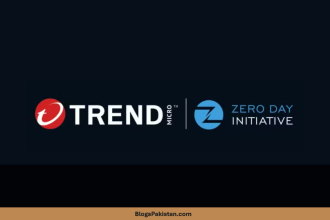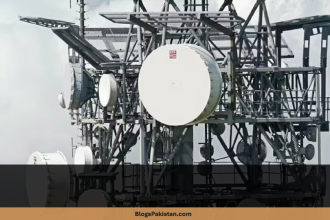
Sam Altman, CEO of OpenAI, is asking users to slow down on ChatGPT. The sudden rise in Ghibli-inspired AI images has caused a big traffic spike. Servers are struggling to keep up with the demand for these animated-style artworks.
Altman made this request public. The sudden increase in AI image requests is putting a strain on the system. This trend combines technology and art, but finding a balance is crucial. Users love the creative outputs, but the infrastructure is feeling the pressure.
Key Takeaways
- Altman warns of server strain from Ghibli-style AI requests.
- Popularity of AI art tools drives unexpected traffic spikes.
- OpenAI seeks to manage demand for stable service.
- Creative trends highlight challenges in scaling AI systems.
- User behavior impacts how AI platforms operate daily.
Understanding the Ghibli-Style AI Trend
Sam Altman recently warned about AI, just as ghibli ai art is becoming popular. This trend combines Studio Ghibli’s dreamlike scenes with new tech. It’s a big hit online.
“We need to slow down and ensure we’re using these tools responsibly,” Altman cautioned.
Origins of the Ghibli Aesthetic
Studio Ghibli’s movies, like My Neighbor Totoro and Spirited Away, are famous for their hand-drawn worlds. They feature magical creatures and whimsical details. Now, AI tries to recreate these visuals digitally.
Rise of AI-Generated Artwork on Social Media
Twitter and Instagram are full of ghibli ai art. People share AI-made pictures that mix Studio Ghibli’s style with their own ideas. It’s popular for several reasons:
- Free AI tools make it easy to create
- Algorithms help make posts look great
- Fans love to recreate their favorite scenes or make new ones
This mix of old and new tech raises questions about real art and who owns it. Also, servers are getting overwhelmed by all these digital wonders.
Altman’s Perspective on Responsible AI Usage
Sam Altman, CEO of OpenAI, warns us to use AI tools wisely. “We need to slow down and ensure these tools don’t outpace our ability to manage them safely,” he says. He points out the balance between creativity and keeping systems stable.
He worries about AI image requests overwhelming servers. This can make things slow and unreliable. “It’s not just about making pretty pictures,” Altman said. “It’s about creating systems that work well over time,” he explained.
| Responsible Use | Risky Behavior |
|---|---|
| Spacing out AI requests | Flooding servers with bulk orders |
| Monitoring system alerts | Ignoring capacity warnings |
| Training users on best practices | Encouraging unchecked usage |
Altman’s advice is to innovate within limits. He thinks AI can grow if we adopt it slowly and keep systems running smoothly. He believes making small changes now will help creativity flourish in the future.
The Surge in AI Image Requests and Its Effects
ChatGPT servers are under a lot of pressure as AI image requests go up. The sudden love for Ghibli-style art has really tested the systems. This boom is changing technology and how we use it.
Server Overload and Performance Issues
| Challenge | Impact |
|---|---|
| High Request Volumes | Slower response times |
| Overloaded Infrastructure | Unplanned downtime |
| Resource Contention | Reduced output quality |
Teams are trying to keep up with the demand without losing reliability. Users might see delays or have limited access during busy times.
User Behavior Behind the Surge
- Virality of trending aesthetics like Studio Ghibli-inspired visuals
- Easy-to-use platforms encouraging casual experimentation
- Sharing culture driving repetitive requests for similar styles
Many users make and share images without thinking about the server’s limits. This creates a cycle where more popularity means more demand.
The Role of Social Media in Spreading AI Trends
Social media platforms are key in spreading the Ghibli-inspired AI art explosion. They use algorithms to show visually stunning content. This includes dreamy landscapes and characters that fill feeds every day.
A single post can start a chain reaction. It can get shares, likes, and comments. This turns small trends into big hits overnight.
- Instagram galleries show off high-resolution AI images, tagged with #GhibliAI. They attract thousands of followers.
- TikTok creators make 15-second videos into tutorials. They teach how to create and tweak AI styles.
- X (Twitter) threads discuss the trend’s artistic value. They keep conversations and curiosity alive.

“The moment I saw a friend’s AI-generated landscape, I had to try it myself,” said one user. This shows how peer influence fuels the craze.
Users don’t just watch; they join in. They remix, tag friends, and add their own twist. This creates a loop that boosts visibility.
Each interaction makes the trend grow. It becomes self-sustaining. This leads to a surge in demand, even straining servers.
These platforms turn isolated experiments into cultural moments. The mix of instant sharing and shared creativity keeps AI art alive. It evolves with each click, filter, and repost.
Exploring the Ghibli AI Craze: Art Meets Technology
The mix of Ghibli’s magical visuals with AI has started a worldwide creative wave. Fans and artists are using tech to bring new life to old stories and memories. Social media is full of AI-altered portraits and movie posters, showing how AI makes art more accessible.
Impact on Pop Culture
- Fan communities remix characters from Studio Ghibli films into new scenarios
- Users share personalized “self-portraits” styled like iconic animations
- Pop culture references flood viral trends, creating shared digital experiences
Transforming Traditional Art Forms
| Aspect | Traditional Art | AI-Enhanced Art |
|---|---|---|
| Creation Time | Months of hand-drawn work | Minutes using AI models |
| Customization | Limited to artist’s skill | Endless style variations |
| Accessibility | Available only through galleries | Instant global sharing |
Art schools now teach AI as a key tool, and museums show digital exhibits mixing old and new. This change shows tech isn’t replacing artists—it’s giving them more to play with. As algorithms learn from artists, they open up new ways for humans and machines to tell stories together.
Maintaining Stability in an AI-Driven World
AI tools like Ghibli-style generators are becoming more popular. This makes it crucial to keep systems running smoothly. Elon Musk’s OpenAI and other tech leaders are working to make sure systems can handle more users without crashing.

They are taking several steps to achieve this. They are scaling cloud networks, upgrading data centers, and making algorithms work faster. Companies are also testing load-balancing tools to spread out traffic during busy times. They are being open with users about what their systems can handle.
“Sustainability isn’t just about speed—it’s about building systems that last,” said Sam Altman in recent remarks.
Developers and policymakers are working together more. Companies like Google and NVIDIA are sharing tips to avoid downtime. At the same time, regulators are creating clear rules for managing AI’s needs. These efforts help keep AI both new and reliable.
Investing in future-proofing now helps avoid problems later. By finding a balance, the tech world can make today’s trends last. This way, they can grow without overloading the systems behind them.
Balancing Innovation with Infrastructure Challenges
As AI trends like the Ghibli-style craze grow, tech companies face a delicate task. They must advance creativity while strengthening their digital foundations. The rush to meet user demands shows a need for smarter infrastructure plans.
Investments in Technology Upgrades
Businesses worldwide are pouring funds into cloud computing and server networks. Google Cloud recently expanded data centers, while NVIDIA boosted GPU resources to handle AI workloads. These upgrades aim to prevent lag during sudden spikes in demand.
- Cloud infrastructure upgrades for faster processing
- AI-specific hardware to support complex algorithms
- Redundant systems to avoid service disruptions
Preparing for Future AI Trends
Anticipating trends like next-gen AI art tools, firms are adopting scalable solutions. Experts advise mixing long-term planning with flexible frameworks. “Infrastructure must adapt as fast as creativity does,” said a 2023 MIT tech report.
Teams now simulate demand scenarios to test system limits. Partnerships between startups and established tech giants also accelerate problem-solving. By prioritizing both innovation and stability, the industry aims to avoid past bottlenecks.
“The next frontier is infrastructure that grows with user imagination.”
Such steps ensure AI stays reliable as tools like Ghibli-style generators become everyday tools, not just viral trends.
Looking Ahead to a More Sustainable AI Future
AI’s creativity, like the Ghibli AI craze, can inspire many. But, its growth must be balanced. Sam Altman’s advice to slow down is key. It shows we need to manage rapid adoption carefully.
Tech companies like OpenAI and artists inspired by Studio Ghibli’s style can innovate. They can do this without overwhelming systems. This balance is crucial for AI’s future.
Future progress relies on a strong infrastructure and mindful usage. Upgrading servers and planning for trends like AI art waves is essential. This prevents crashes and delays.
Users can help by spreading requests evenly. Developers should invest in scalable tech. This ensures AI stays accessible without causing disruptions.
A sustainable path values both creativity and responsibility. When everyone prioritizes stability, AI can keep evolving. The next steps involve learning from today’s challenges.
We need to build a foundation where tech and art grow together. This way, AI can evolve without limits.
FAQ
What is the Ghibli AI trend about?
The Ghibli AI trend is about making art inspired by Studio Ghibli’s style. It uses AI to create images that look like Ghibli’s work. This trend is very popular.
Why did Sam Altman ask users to slow down their requests?
Sam Altman, OpenAI’s CEO, asked users to slow down. This was because too many requests were overwhelming the system. The demand for Ghibli-inspired AI art was too high.
How has social media influenced the Ghibli AI craze?
Social media has played a big role in the Ghibli AI trend. It lets users share AI art easily. This helps the art go viral and become more popular.
What are the potential effects of server overload due to increased AI image requests?
Too many AI image requests can cause server overload. This leads to slower service and temporary outages. It can make using AI harder.
How is AI transforming traditional art forms?
AI is changing traditional art by creating new styles. It’s not just copying old styles. It’s also making art that challenges old ways of thinking.
What measures are being taken to ensure stability in AI services?
Companies are upgrading their systems and making new rules. They want to keep AI services running smoothly, even with more users.
What future trends can we expect in the realm of AI and art?
We’ll see more exciting art and tech combos in the future. AI will get better, leading to new art forms. This will change how we see art today.
How can users contribute to more responsible AI usage?
Users can help by being careful with their requests. They should know the limits of AI. This way, they can use AI responsibly and creatively.










